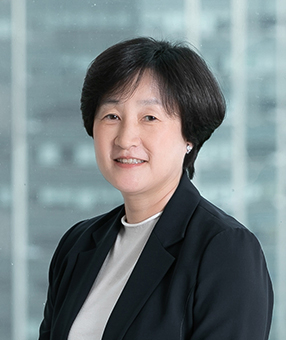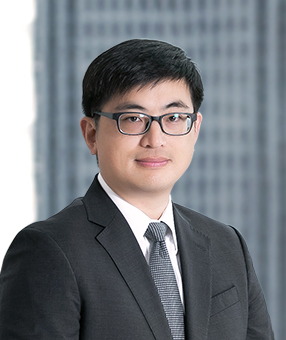On August 23, 2019, the Korean Patent Court held that the scope of the compound patent covering Boehringer Ingelheim's Pradaxa® product (main ingredient: dabigatran etexilate methansulfonate) during its patent term extension ("PTE") covers generic products containing free base forms of dabigatran etexilate. This is the first decision from the Patent Court in the wake of the Supreme Court decision in January 2019 in the Vesicare® case, where the Supreme Court held that the scope of the PTE for the compound patent covering Astellas' Vesicare® product (main ingredient: solifenacin succinate) also covered a generic product containing a different solifenacin salt (fumarate). This Supreme Court decision was highly significant because while Korean law provides that PTE scope is limited to practicing the extended patent only in relation to the approved product on which the PTE is based, exactly what this means has not yet been fully defined.
Supreme Court's Previous Decision in the Vesicare Case
In the Vesicare case, the Supreme Court established a general rule that the scope of a compound patent PTE should be determined by focusing on whether the accused product is the same as the original approved product in terms of the active ingredient, therapeutic effect and medicinal use. The Supreme Court further stated that "[e]ven if an accused product has a different salt form than the original approved product, it should be considered within the PTE scope if (1) it would have been easy for a person skilled in the art to select the salt form used in the accused product, and (2) the therapeutic effect exhibited by the pharmacological mechanism of the active ingredient in the accused product is substantially the same as the original approved product."
The Supreme Court determined that the salt form of the accused product in that case (fumarate) would have been easy to select in view of the following facts: (i) the patent specification described a number of organic acids which could form a salt with solifenacin, including succinic acid and fumaric acid; (ii) fumarate and succinate are categorized as "Class I," meaning that they are commonly used pharmaceutical salts (based on the Handbook of Pharmaceutical Salts); and (iii) it was well known that solifenacin fumarate and solifenacin succinate involve the same in vivo delivery and absorption processes.
Regarding substantial equivalence of therapeutic effect, the Supreme Court noted the following: (i) the accused product was approved based on bioequivalence testing data only; and (ii) when solifenacin succinate is orally administered, it dissociates into solifenacin and succinic acid, and only solifenacin is absorbed into the body to exert a pharmacological effect. While the generics argued there were differences in properties such as melting point or solubility between the succinate and fumarate forms, and that the original approved product and the accused product were approved for different dosages, the Supreme Court concluded that the therapeutic effect resulting from the pharmacological action of the active ingredient absorbed into the human body was substantially the same for both products.
Facts and Issues in the Pradaxa Case
The Pradaxa case also involved a PTE for a compound patent based on the approval of a product using a specific salt form (methanesulfonate) of the patented compound, dabigatran etexilate. A number of generic companies filed scope confirmation actions seeking decisions that their products were outside the scope of the Pradaxa PTE because they contained free base forms of dabigatran etexilate, and argued that the Supreme Court Vesicare decision did not control because that case only compared the approved salt form with another salt form, not a free base form.
The generics further sought to distinguish the Vesicare decision on the basis that dabigatran etexilate free base was known to be significantly less soluble than salt forms of dabigatran etexilate, and therefore one skilled in the art would not have found it easy to select a free base form in place of the approved salt form. The generics also argued that their free base products had a substantially different therapeutic effect from Pradaxa on the basis of their different safety and stability properties.
Patent Court's Ruling in Pradaxa and Implications
The Patent Court rejected the generics' argument that the Vesicare decision did not apply, and applied the Supreme Court's reasoning to hold that the Pradaxa generics also were within the scope of the Pradaxa PTE, regardless of the fact that they were using free base forms instead of other salts.
With respect to ease of selection, the Patent Court, consistent with the Supreme Court in the Vesicare case, noted that (i) the free base form was mentioned in the specification of the compound patent as having the claimed pharmaceutical use, (ii) active compounds in free base form are commonly used in pharmaceutical products, and (iii) it was well known that dabigatran etexilate in both the methanesulfonate and the free base form used the same in vivo delivery and absorption processes. As a result, the Patent Court concluded that it would have been easy for a person skilled in the art to select the free base form of dabigatran etexilate.
The Patent Court also held that the generics' products and Pradaxa had the same therapeutic effect resulting from the pharmacological action of dabigatran etexilate (the active ingredient) when absorbed into the human body, regardless of the differences in specific forms and the resulting different physicochemical properties. The Patent Court noted that the generics' products were approved based on bioequivalence testing data alone, and were not recognized to have improved safety and efficacy compared to Pradaxa, so it was clear that the therapeutic effect of their products was equivalent to Pradaxa.
Related Topics







